Just how safe are EVs? For many, electric vehicles still feel new—and when stories about battery fires make headlines, they can spark more fear than fact. But the reality is, EVs are meeting—and in some cases exceeding—the safety benchmarks set for internal combustion engine (ICE) vehicles.
Let’s take a look at the facts.
EV Safety Standards
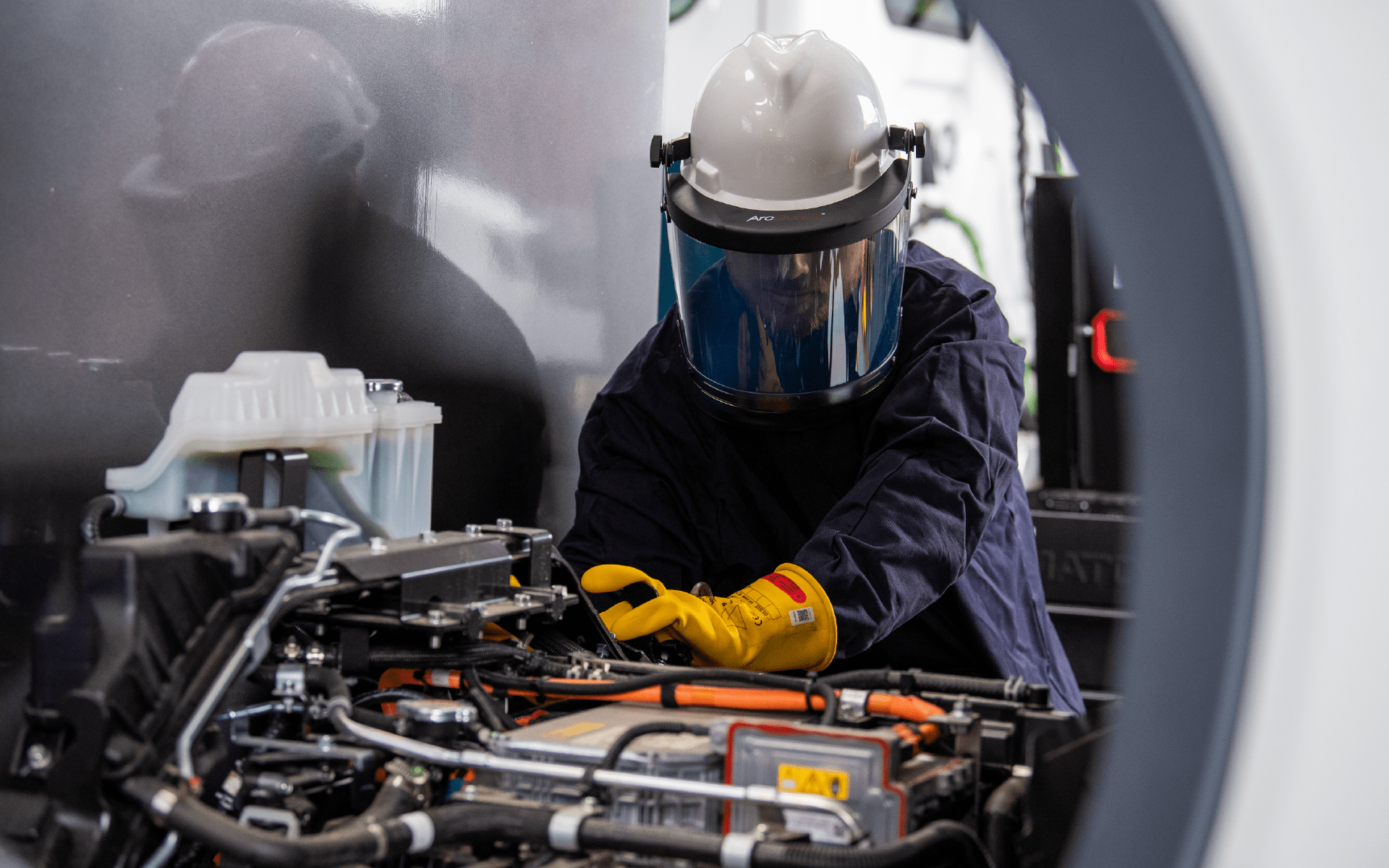
Electric vehicles must meet the same safety standards as conventional vehicles, as mandated by the Federal Motor Vehicle Safety Standards in the U.S. and the Canada Motor Vehicle Safety Standards (CMVSS).
Battery Safety Standards
High-voltage battery packs also have to meet separate safety standards, and EVs must be designed with extra safety features that shut down the vehicle’s electrical systems when a collision or short circuit is detected.
For example, the RIZON chassis includes a shock-activated switch that automatically disconnects the high-voltage system in the event of a strong impact. A manual shutoff switch is also located on the side of the chassis.
For detailed information on EV high-voltage safety, check out our deep-dive article.
EV Adoption Rate in North America

The first quarter of EV sales in the U.S. in 2025 was approximately 300,000 units, marking a 11.4% increase from the same period in 2024. While sales have been strong, electric vehicles still represent just approximately 1.4% of all vehicles on U.S. roads.
In Canada, one in six new vehicles registered in 2024 was a zero-emission vehicle, with the market share reaching 15.4%.
Despite these rising adoption rates, electric vehicles in North America still account for a relatively small share compared to internal combustion vehicles.
This raises an important question: what proportion of vehicle fires actually involve electric vehicles?
EV Fire Data
One of the biggest concerns among people unfamiliar with electric vehicles is the misconception that EVs pose a greater fire risk than ICE vehicles.
This is not the case. EV fires are statistically much less frequent than those from ICE vehicles.
According to data from the U.S. National Transportation Safety Board calculated with vehicle sales data from the Bureau of Transportation Statistics, there were only 25 fires per 100,000 electric vehicles sold—a rate of just 0.025%.
To compare, ICE vehicles have been estimated to experience between 1,500 to 3,500 fires per 100,000 vehicles, according to data published by the National Fire Protection Association. These figures underscore that EVs are not only meeting expectations—they’re outpacing ICE vehicles in real-world fire safety performance.
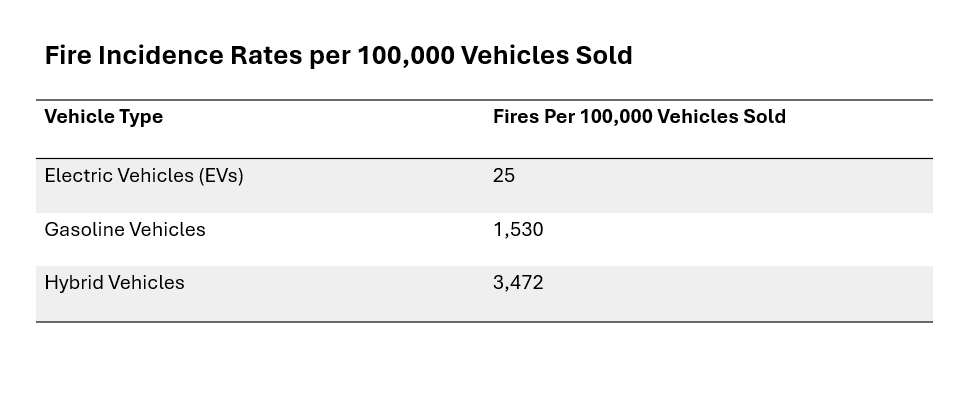
What Happens in Countries with Higher EV Adoption Rates?

While the EV adoption rate in North America is growing, does EV safety decline as more EVs hit streets?
Sweden, one of the global leaders in EV adoption, provides a compelling case study thanks to its detailed tracking of EV and ICE vehicle fires from 2018 to 2022. In Q1 2025, 40% of new vehicle registrations were fully electric (BEVs), with plug-in hybrids (PHEVs) adding another 19%.
Despite EVs making up more than half of all registered vehicles in 2022, they accounted for just 0.4% of annual passenger vehicle fires—compared to 98.1% caused by internal combustion engine (ICE) vehicles.
With the data clearly presented, it’s evident that media coverage of EV fires has contributed to the false perception that they pose a greater fire risk than ICE vehicles.
Check out our EV myth buster article for more information on common EV misconceptions.
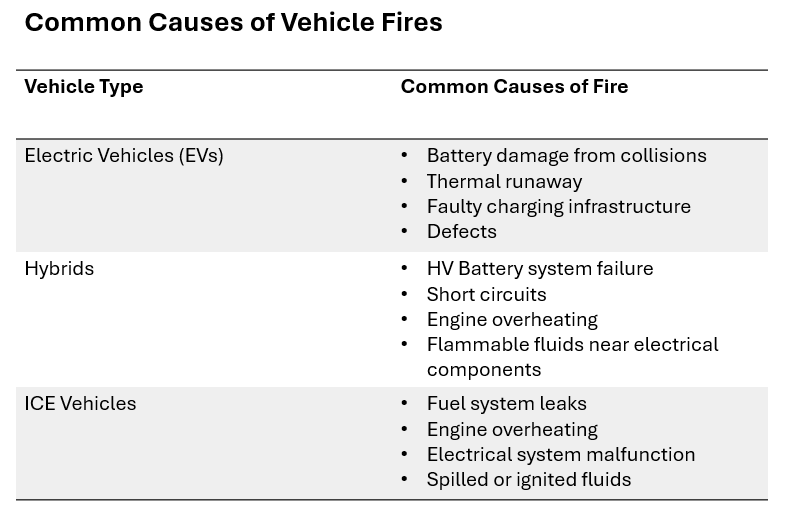
Battery Types
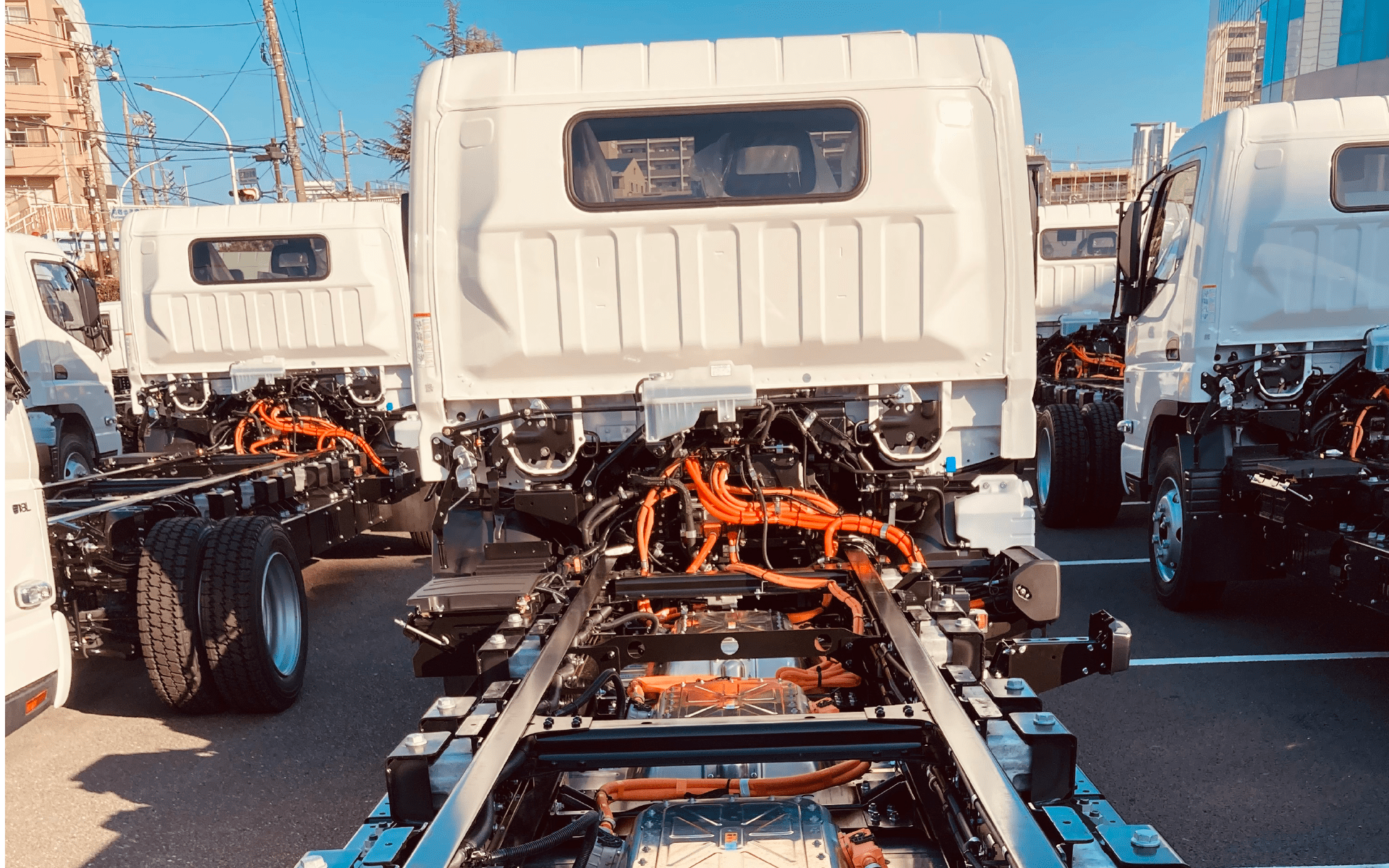
Lithium-ion batteries are the most commonly used type in EVs, with nickel-manganese-cobalt (NMC), nickel-cobalt-aluminum (NCA), and lithium-iron-phosphate (LFP) being the most widely used chemistries.
● NMC Batteries: Known for their high energy density, these batteries support longer driving ranges and faster charging speeds.
● NCA Batteries: Similar to NMC batteries, they offer high energy density and are used in certain high-performance EVs.
● LFP Batteries: Although slightly less energy-dense than NMC, LFP batteries typically offer greater thermal stability and a longer lifespan, making them a popular choice.
For its part, RIZON equips its trucks with LFP batteries, which are generally considered the safest type of lithium-ion battery and are much less reactive than NMC batteries.
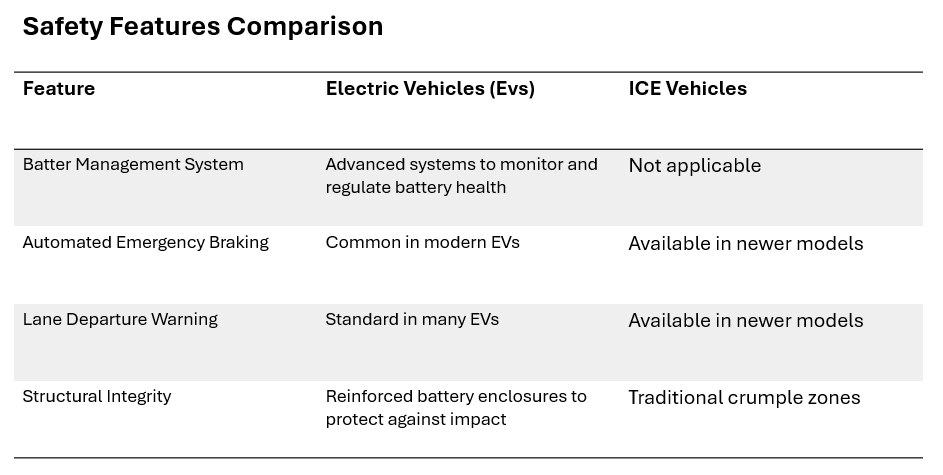
EVs Are Meeting and Exceeding Modern Safety Standards
The data makes one thing clear: when it comes to the question “How safe are EVs?”, the answer is that they’re not just meeting modern safety standards—they’re quietly outperforming expectations in key areas like fire risk. As adoption increases globally, real-world evidence continues to dismantle outdated assumptions fueled by isolated headlines. Robust safety systems, evolving battery technology, and a growing track record show that EVs aren’t just the future—they’re a safe bet today.

